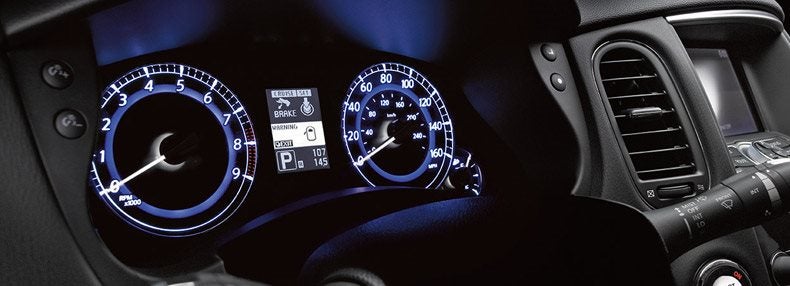
Infiniti is set to release a variable compression four-stroke petrol engine, plus a high-performance “S” line to sit atop all new models.
The upcoming QX50 crossover SUV will be deliver the brand a technical breakthrough, becoming the first car in the world with variable-compression engine technology, the technology which could bring about the death of diesel engines in passenger cars.
To be based around an all-new four-cylinder engine, the variable-compression system is claimed by Infiniti to deliver V6 power with four-cylinder diesel fuel economy.It is said by Infiniti to achieve this by changing the engine’s compression ratio depending on the power demand from the driver.
The new engine also underscores Infiniti’s new family of S models, which will be the Japanese premium brand’s high-performance family and the naming of which is bound to have Audi (which already has S versions of the A3, the A4, the A6, the A8 and the A7, along with its Q3, Q5 and Q7 SUVs) fuming.
“You will find there’s a little red S [on the Q60]… And you’ll find that [red S] going forward on all our [highest] performance vehicles given they have the right engine capacity and performance,” Infiniti boss Roland Krueger stated.
Sensors detect the car’s driving condition and use the inputs to instantly select the most suitable compression ratio. The displacement of the engine changes and the compression ratio varies between 8:1 for high performance and 14:1 for high efficiency.

“The ingenuity of VC-T engine technology lies in its ability to transform itself and seamlessly raise or lower the height the pistons reach,” the company said.
Compression ratio is the measure of how much the air-fuel mixture is reduced in the engine’s cylinders before being ignited to produce power.
The variable compression engine paves the way for lower emissions and fuel economy gains. Infiniti is far from the first carmaker to try to use variable compression, with Porsche, Volvo, PSA (Peugeot-Citroen) and Renault all pushing ahead with research, viewing it as a bridging technology between internal combustion engines and electric cars.
The concept is effectively to change the swept volume of the engine’s cylinders at top-dead center, delivering the best of both worlds for performance and fuel consumption. It’s also far from new, with British internal-combustion engineering legend Sir Harry Ricardo inventing it in the 1920s.
Technology of the day ruled out mass production, but Ricardo’s invention led to his equally pioneering work in fuel quality, which delivered us today’s octane rating system.

Saab’s bankruptcy stopped it from delivering on the supercharged variable-compression four-cylinder petrol motor it debuted at the Geneva Motor Show in 2000. Very much a last addition to Saab’s long list of quirky engineering innovations, its engine split the block into two halves, with what was effectively a hinge in the middle lifting one side of the block up to four degrees higher than the other.
There are other ideas for achieving the same result, though. Yamaha has worked with two-stroke variable-compression motors since the late 1990, while Lotus’ single-cylinder Omnivore concept used a movable puck at the top of the combustion chamber, Orbital fuel injection and a two-stroke cycle. Its development effectively stopped during the Dany Bahar era.
Peugeot’s has a concept dubbed MCE-5, which adjusts the connecting rod’s length via a system that looks fearfully complex, while Dutch engineering outfit Gomecsys has a system it says bolts on to existing crankshafts.
One of the more promising and imaginative ways comes from Finland’s Waulis Motors, with the crankshaft attached to an eccentric wheel, which is itself attached to a guidance wheel.
But Infiniti is staying quiet on whether it’s developing its own system or working with a concept it has bought in from outside.







